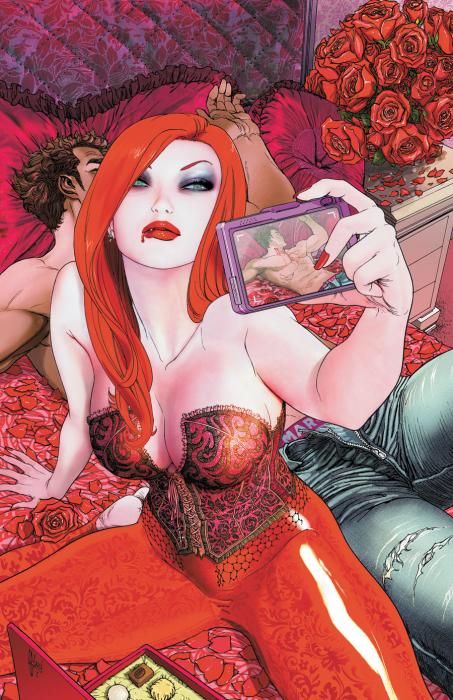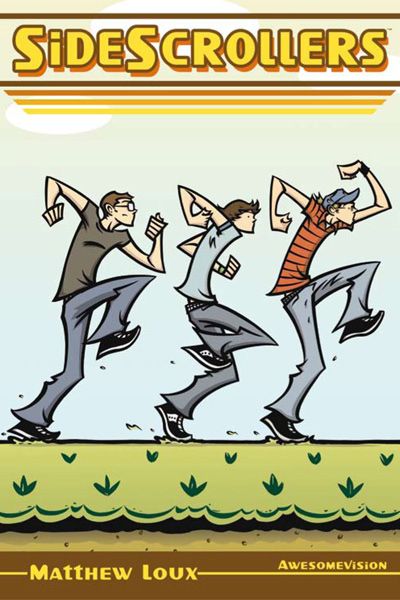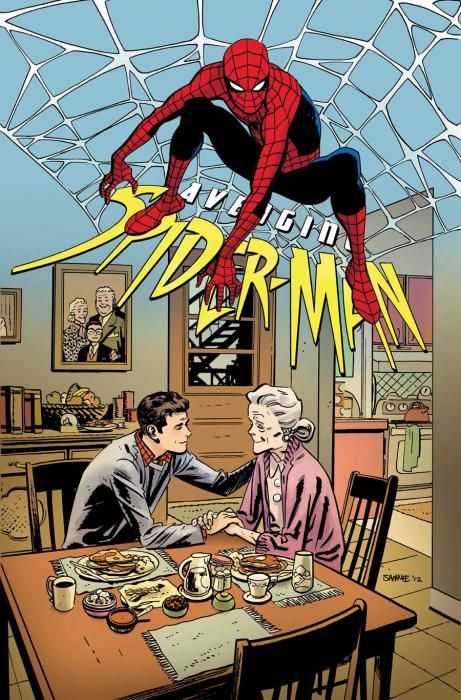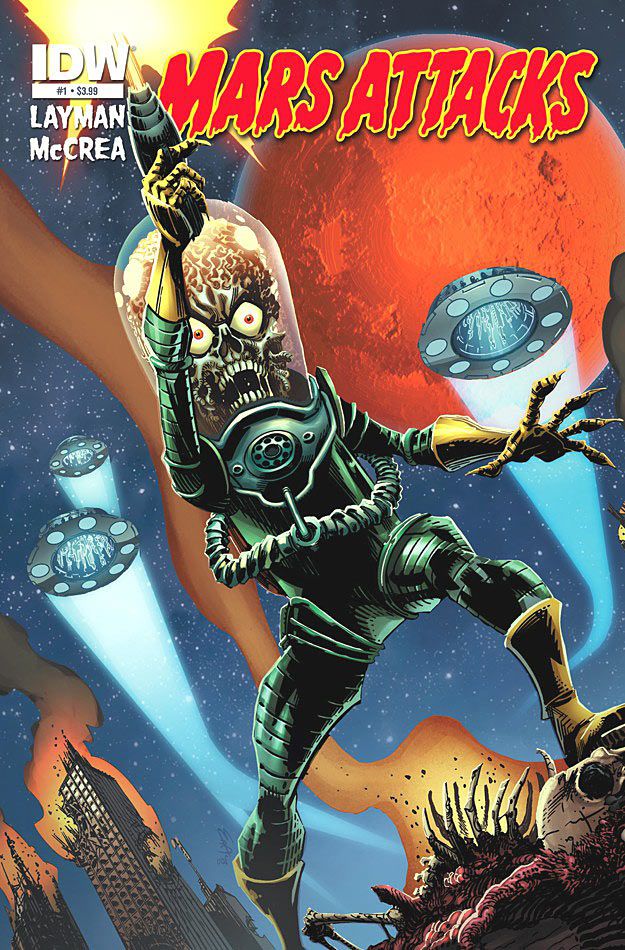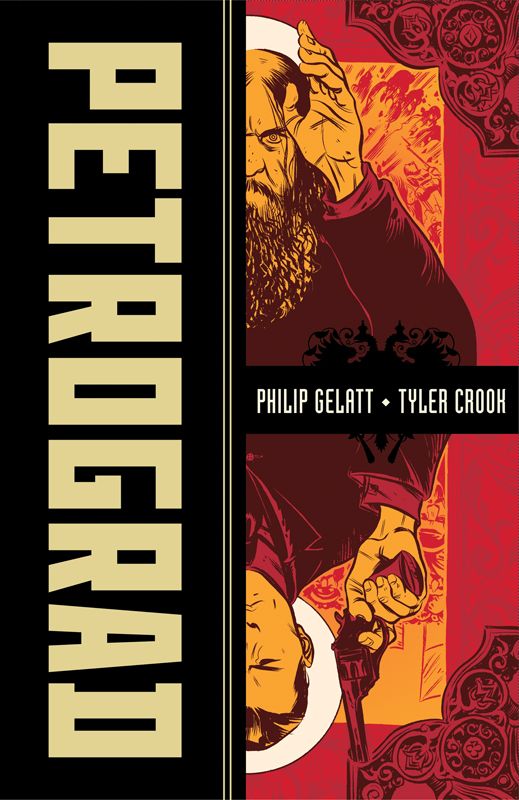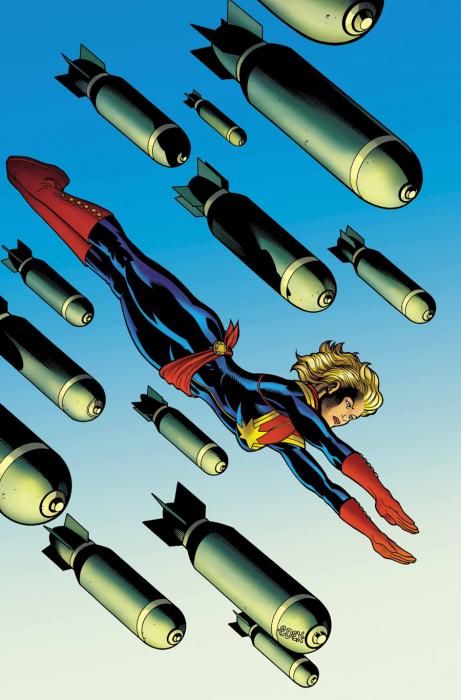Happy Labor Day, Americans, and welcome, everybody, to What Are You Reading? Today our special guest is Paul Allor, writer of IDW's Teenage Mutant Ninja Turtles spinoff, Fugitoid, as well as his own anthology Clockwork.
To see what Paul and the Robot 6 crew have been reading, click below:
*****
Michael May
I debated doing a whole Women of Action column on Ian Edginton and Mike S. Miller's National Comics: Looker, but it's just a one-shot, so I don't think I will. I quite liked it though and I wasn't sure I would. I'm a fan of Edginton's work and Miller is a good artist, but you have to fight hard to get me to read a new vampire story and making the vampire a supermodel wasn't enough to pull me in. I ended up trying it solely because I'm interested in comics named after their female leads, though even that was an error on my part, because the New 52 "Looker" isn't a character, but the name of her modeling agency.
Edginton makes a nice comparison between vampires and people who get off on other people's drama. I wish he'd done more with that, but it's there and maybe he doesn't need to belabor the point. What I really like about the comic though is the main character, Emily Briggs, a former model who had to go behind the scenes in the industry and start her own agency when she became a vampire. She's a mean, shallow person at the beginning of the story, but by the end has just begun down the path to redemption. I'm a sucker for that kind of growth and Edginton smartly leaves plenty of work for her to do after the last page. I hope DC finds more for him to do with this character (and her supporting cast, whom I also like) later, either in a longer National Comics arc or a series of some kind.
In contrast, I think I'm done with Aquaman after #12. I've enjoyed it as an experiment in having one of DC's most successful writers reboot one of their least successful characters, but the experiment isn't working for me. Aquaman's gone through a major character change over the last year and it's one that's described in the series as a regression. I don't care to watch him descend into darkness only to fight his way back to being like he was in the first issue. I also don't care to watch him impale henchmen through their backs. Geoff Johns needs a new schtick.
Finally, I read the second volume of Magdalena: Origins. I mentioned how I didn't care at all for the first volume, but this one has Brian Holguin correcting a lot of mistakes made in the character's earliest appearances. Instead of throwing a cool concept over multiple, interchangeable characters, Holguin creates one woman and makes her THE Magdalena. She's still not all that interesting or original, but it's a step in the right direction. There's at least something there for later writers to build on and I'm curious to see how they (especially Ron Marz) did that.
Mark Kardwell
Read my first Marvel comic in a year or two this week. The collected edition of Marvel Universe Versus The Punisher. Maberry's script is an unoriginal I Am Legend retread, hitting loads of obvious fan service notes, but goddamn, Goran Parlov... that Croatian guy can sure push a brush around. Waiting eagerly for his Fury Max work with Garth Ennis to be collected.
Brigid Alverson
As soon as I heard that some parent had complained about Sidescrollers as a summer reading assignment, I had to get a copy to see what the fuss was about. Fortunately, I live in permissive Massachusetts, so my library had a copy in the YA section. As a parent, I was less bothered by the language than the hijinks (trashing a car, liberating a tank of lobsters) and the fact that the plot turns on a football player's plan to get a girl to have sex with him, capture it on his webcam, and text it to the whole school. It's really about standing up to bullies, though, and the three main characters, all recent graduates from high school who spend their days playing video games and eating junk food, work together to thwart the football player's plan. It's all over the top and very funny, and I wouldn't snatch it away from a teenager on account of the language or the plot—they see plenty worse on TV every day.
Issue 4 of X-O Manowar has a lot of talking heads, but the middle section, where Aric gets to really give the suit a workout, is a humdinger, thanks to artist Cary Nord's powerful depiction of the action scenes. Meanwhile, the plot is getting more tangled. This is more than just the story of a fifth-century Visigoth transported to modern times in a powerful super-suit—it looks like shadowy forces are at play, and we get a hint of the back story of The Vine, the aliens who first captured Aric, and what they are about. Plus their arguments about the suit, which is sacred to them, and why it chose a human to wear it, are an interesting little side trip into the nature of religion, if you choose to read them that way. If there's a flaw (other than the overuse of red in the Vine scenes, which makes it hard to read in digital format), it's that the suit is a little too good; not only does it make Aric invincible, it apparently also teaches him history and modern Italian. Still, this is a smart comic and a fun read.
Tim O'Shea
Wolverine and the X-Men #15: In all the drama and chaos of A vs X, it’s nice to have an issue like this—where Aaron is able to let his sense of humor shine in certain scenes. Throughout most of this new series, in the back of my mind I have thought—this is a book where Charles Xavier would stick out like a sore thumb. This was not Xavier’s X-Men or school. And yet, I was wrong—sure it’s not his school, but Xavier fits right in wherever he goes in the mutant dynamics. Speaking of humor, Aaron’s ability to pull it off only works when teamed with the right artist. Fortunately Jorge Molina Is such an artist. In one scene between Logan/Wolverine and Bobby/Iceman—they are bonding over shots. At the end of the scene, Logan makes a snarky comment to Bobby as he walks away from him. Molina has Logan toss his shot glass on his desk as an afterthought. It’s a little moment in a very busy issue, but it seals the tone of the interaction between the two characters.
Avenging Spider-Man #11: My pal Dugan Trodglen predicts that Zeb Wells might be the next major writer of Spider-Man when Dan Slott steps down. Judging by this standalone story featuring Aunt May and Peter observing the anniversary of Uncle Ben’s murder, I hope Dugan is right. This is a genuine tearjerker of a story (as in some way it touches upon the feelings many of us have in the process of mourning), not an experience I expected from a comic. But Steve Dillon was the worst artist for this story. Dillon’s faces have two emotions: anger and shock. Honestly Aunt May looks angry or malevolent in almost every panel. Fortunately the script is far better than the art. I think Dillon is a great artist, just not for this tale.
Winter Soldier #9: Hey Marvel, stop slapping stock covers on your books. This issue (in which Natasha has been brainwashed) has no appearance from Black Widow, but guess who is on the cover. And as much as I love Steve Epting’s art, it is weird how he draws Winter Soldier with a mullet—I do not think Bucky has had a mullet since before he became Cap. Winter Soldier looks really goofy with a mullet—it’s like the senior portrait you never want to see again. Now on to the positive aspect. Yippie! Michael Lark (inked by Brian Thies with Stefano Gaudiano) doing full ballet scenes (Natasha’s brainwashed cover is in a ballet) colored by Bettie Breitweiser. Yes, it Is as compelling as you would expect it to be. Lark and Breitweiser are a combo I hope to see more and more of in years to come. Hell, come to think of it, any artist looks great when colored by Breitweiser. But when it is someone as unique and distinct as Lark, it is a real treasure to behold.
Hulk #57: Goodbye General Thunderbolt Ross, you were a fun character to read when written by Jeff Parker. I have said it before, but it bears repeating. Ross was a useless one-dimensional character to me, but Parker turned him into one of my favorite Marvel characters. Parker explored Ross’ childhood without using lame clichés or predictable stereotypes. I look forward to She-Hulk and to see how much of the supporting cast stays (Parker has promised me I get to see more of Aaron/Machine Man). Another bonus to this arc’s conclusion, Dale Eaglesham gets to redesign Machine Man and draw his beloved Alpha Flight one more time.
X-O Manowar #4: The story really picks up as it moves to the modern day with this issue. Artist Cary Nord clearly relishes pitting the book’s lead character against fighter jets. His layouts made for some fun action in this issue. I think this series continues to have legs—and I hope the sales reflect that since I would like to read the comic for a long time to come. Time will tell.
Paul Allor
Mars Attacks
John Layman and John McCrea
IDW Publishing
You think you understand how this is going to go; cartoonishly evil Martians attack Earth; Earth fights back; good times are had by all (or, at least, by the reader).
But from the start it becomes clear that writer John Layman has something different in mind. The book opens with a sympathetic portrait of one Martian’s disturbing encounter with some of humanity’s worst impulses. Layman and artist John McCrea are crafting a complex war story, a broad canvas with heroes and villains on each side.
Don’t get me wrong: no one would ever mistake Mars Attacks for a sober-minded dissertation on war and its consequences. These deeper intentions are packaged inside a series of madcap adventures, delivered with Mr. Layman’s usual structural insanity, and some jaw-droppingly gorgeous art from Mr. McCrea.
As a result, the book is fun as heck, but I read it with a growing sense of disquiet. My loyalties are already divided, and I suspect they will become moreso, the deeper we go. What an unexpected delight.
The Push Man and Other Stories
Yosihiro Tatsumi
Drawn & Quarterly
The first in a series of English-version Tatsumi collections, put out by Drawn & Quarterly, The Push Man collects 16 of Tatsumi’s short comic stories from 1969.
These stories are at turns brutal and sexual and perverted and unrelentingly brilliant. With an open, minimalist art style, Tatsumi introduces us to characters who are lost and confused. Women and (mostly) men who are struggling to make sense of a world that has no use for them.
The phrase “slice of life” is overused, but it absolutely applies here. In these stories, we bear witness to one small part of an ongoing struggle. Nothing ends. Nothing is resolved or overcome. We see, quite literally, a small slice of the characters’ lives. And then we move on.
Petrograd
Philip Gelatt and Tyler Crook
Oni Press
When I read a comic like Petrograd, it makes me wonder why there aren’t more comics like Petrograd. This book is so many things; epic historical fiction; a gripping spy story; an affecting personal drama. Writer Philip Gelatt and Tyler Crook have created something truly special, here.
It helps that the book involves the murder of Rasputin, one of history’s most fascinating chapters. Both Gelatt and Crook imbue the book with a incredible sense of verisimilitude, and Crook’s exterior scenes perfectly convey the bitterly-cold world these characters inhabit.
From its fascinating opening scene to its heartbreaking final image, Petrograd is an absolute masterpiece. Put a copy of this book in every mailbox in America, and the comics industry would no longer bear the burden of a niche readership.
Old City Blues
Giannis Milonogiannis
Archaia/new issues published on the web
This book is just an absolute joy to read. I recently caught up with the most recent issues on the web, and was thrilled to find that they matched and even exceeded the quality of the first arc (which has since been collected by Archaia).
Old City Blues reads like a thank you note/love letter to the stories that creator Giannis Milonogiannis grew up on (and in the interest of full disclosure, I should note that Giannis and I worked together on a short comic for the upcoming Clockwork, Volume 2). He mashes together so many of the great cyberpunk and sci-fi dystopia tales of the last 50 years, and comes out with something that feels vibrant and new. This is thanks, in part, to Milonogiannis’ extraordinary artistic skills, and in part to the fact that he’s simply a darned talented writer.
OCB is also incredibly fast-paced, with the plots moving along at a furious clip. In a way, Milonogiannis is writing in shorthand. Because this story owes so much to what came before, we don’t need every detail to be drawn out and hammered home. Old City Blues’ target audience already understands these stories; we see them in our dreams.
Captain Marvel
Kelly Sue DeConnick and Dexter Soy
Marvel Comics
I enjoyed the first couple of issues of Captain Marvel a great deal, but the third issue was where they really got me. In particular, a scene where Captain Marvel delivers a message to an enemy pilot. It is an incredibly well-written scene, and it tells you everything you need to know about Carol Danvers. This is a person who clearly feels she has something to prove. She has pride to burn, and more than a little anger, which she’s so far kept nicely in check. I can’t help but feel like those things are gonna bite her in the ass before too long.
One of the things I love about DeConnick’s work is that she goes deep into the psyche of these comic book characters, both hero and villain. Her work has a level of emotional depth and resonance that many mainstream superhero books lack.
The upshot: Captain Marvel combines a killer adventure story with a complex and fascinating character. This book is just getting started, and I can’t wait to see where it goes.


